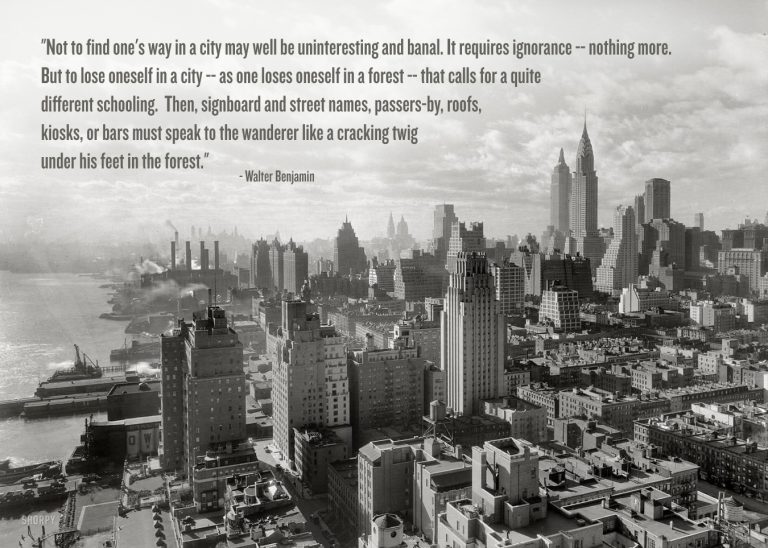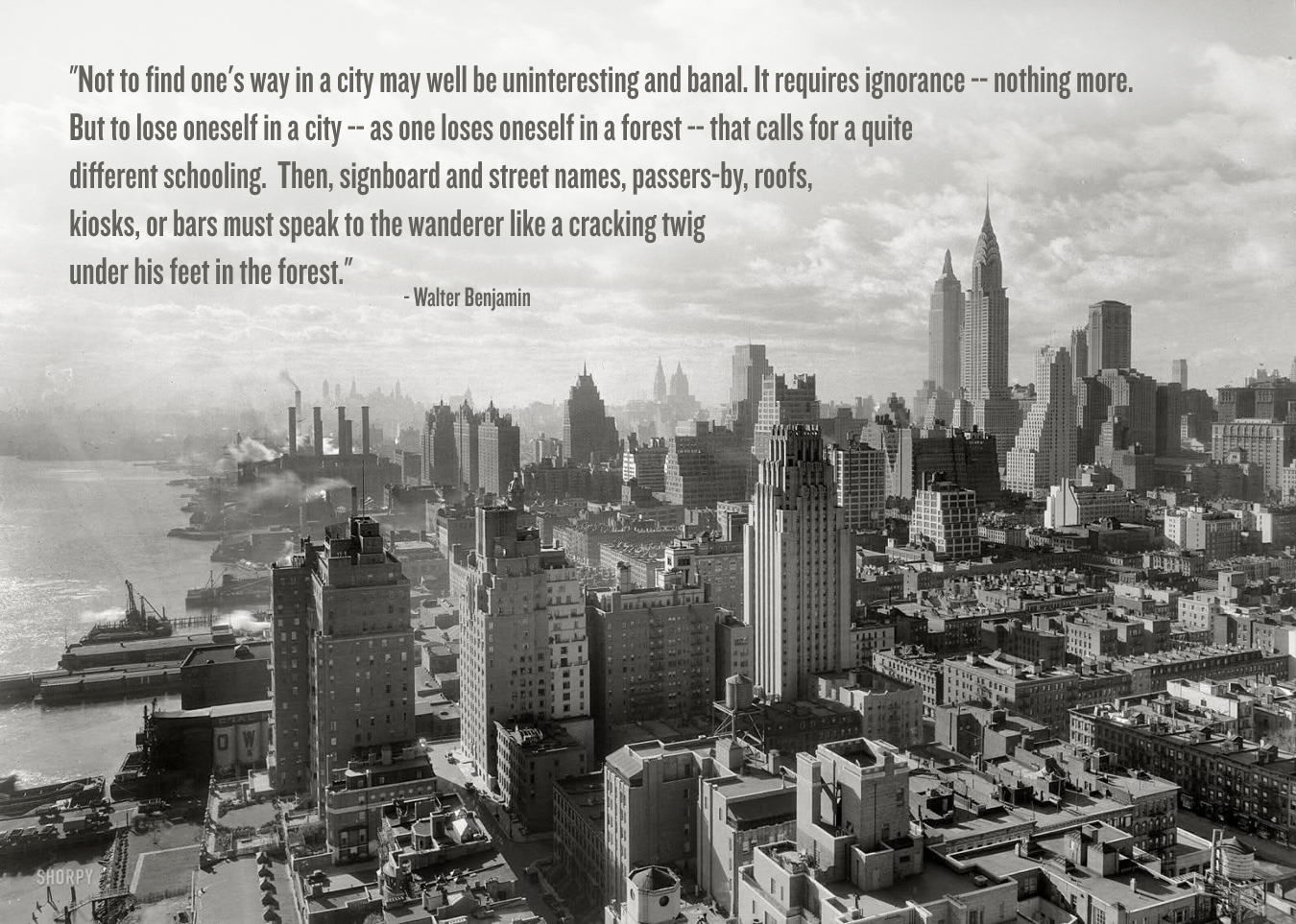I’ve often written about the zen and the art of experiencing the urban environment as a “flâneur”, a term coined by Charles Baudelaire (1821-1867) from his musings on Paris (the word is a derivation of the French masculine noun flâneur—which has the basic meanings of “stroller”, “lounger”). During my final year of Architecture studies I explored the work of Baudelaire during research for my thesis “Architecture For An Expanding Universe” which partly examined the modern mythology that has emerged from the streets of the mothership of modernity herself: New York City. New York and Paris have some fascinating parallels in this regard, because following the 1848 Revolution in France, after which the empire was reestablished with clearly bourgeois pretensions of “order” and “morals”, Baudelaire began asserting that traditional art was inadequate for the new dynamic complications of modern life. Social and economic changes brought by industrialization demanded that the artist immerse himself in the metropolis and become, in Baudelaire’s phrase, “a botanist of the sidewalk … a person who walks the city in order to experience it”. The term flâneur was eventually borrowed by Walter Benjamin in his concepts of the urban observer as both an analytical tool and a lifestyle:
“The crowd is [the flâneur’s] element, as the air is that of birds and water of fishes. His passion and profession are to become one flesh with the crowd. For the perfect flâneur, for the passionate spectator, it is an immense job to set up house in the middle of the multitude, amid the ebb and flow of movement, in the midst of the fugitive and the infinite.”
The experience of the street and urban spaces are fundamentally interwoven with the rise of the modern world, and in a brand new column in The Atlantic just published this morning, writer Kain Benfield gives us a fascinating exclusive preview of an upcoming book on the subject written by his close friend, urban designer Victor Dover. Dover is not only the Principal-in-Charge of urban design firm Dover, Kohl & Partners, he is also the National Chair of the Congress For The New Urbanism. Dover is co-writing the book with John Massengale and it’s set to be published next year. And as Benfield raves, the book promises to be a must-have when it’s eventually released. Benfield writes in The Atlantic:
LEIDESGRACHT, AMSTERDAM: Talk about multi-modal! This street has a canal, bicycling, cars, at least one motor scooter, and space for pedestrians. This makes it a good example of a “complete street” that accommodates different types of users, while still not being so wide as to prevent a sense that one is in a neighborhood, not on a thoroughfare. Victor and I had a conversation last month about the difference between the kinds of streets he prefers and those considered “complete” in current transportation parlance. I came away with a strengthened awareness that a street can be complete in the sense of being multi-modal – no small feat, by the way – but still lack greatness, because of low “walk appeal,” to borrow Steve Mouzon’s phrase. A truly great street will be complete not just in the roadway and sidewalks but also alongside them. Of the Leidesgracht, Victor notes that “cyclists are not a separate species in Amsterdam.”
You can read the preview in full by visiting TheAtlanticCities.com. For more on my own experiences as a flâneur (including why I highly recommend listening to Philip Glass as you walk through the streets of Manhattan) CLICK HERE.



